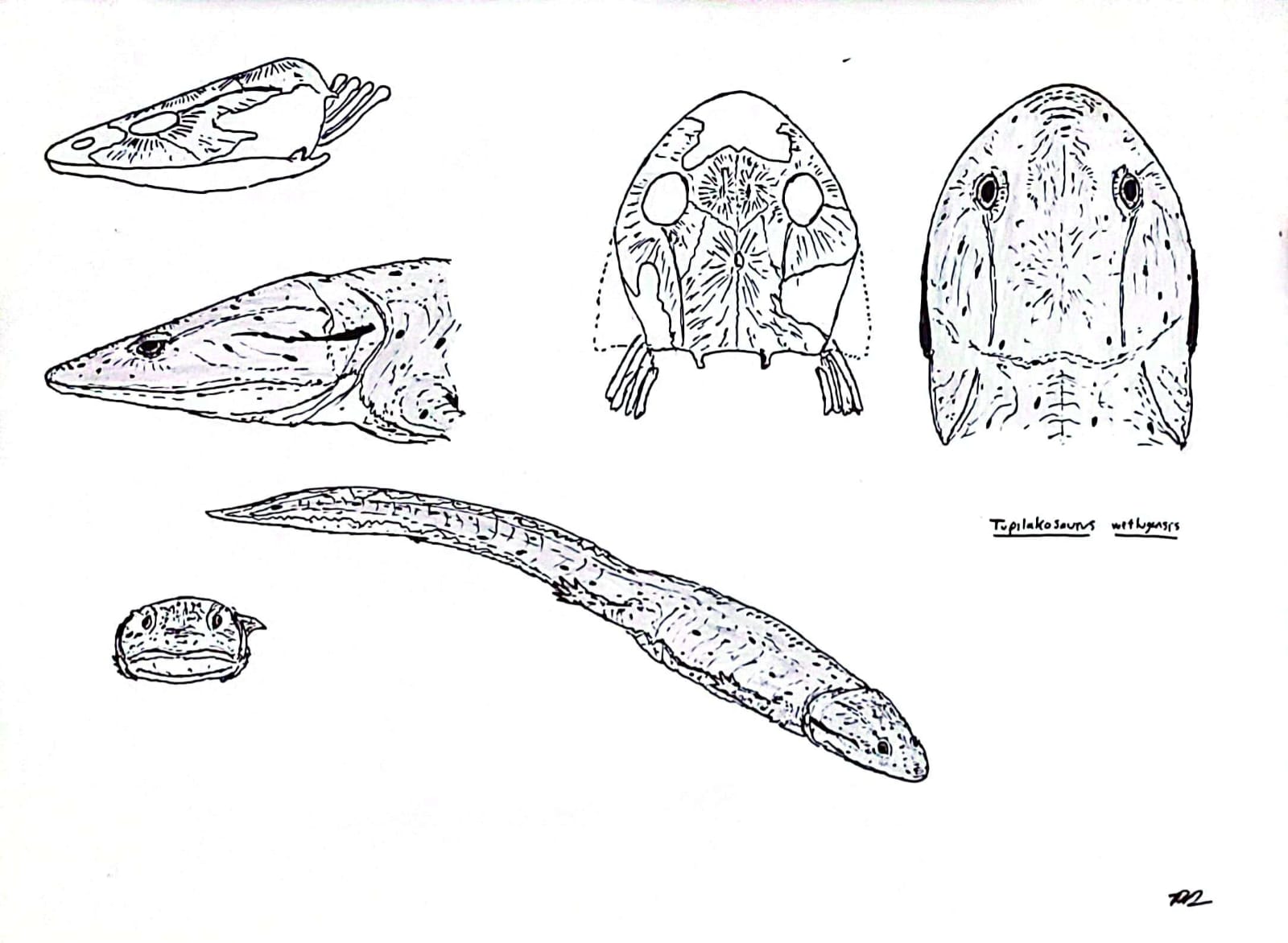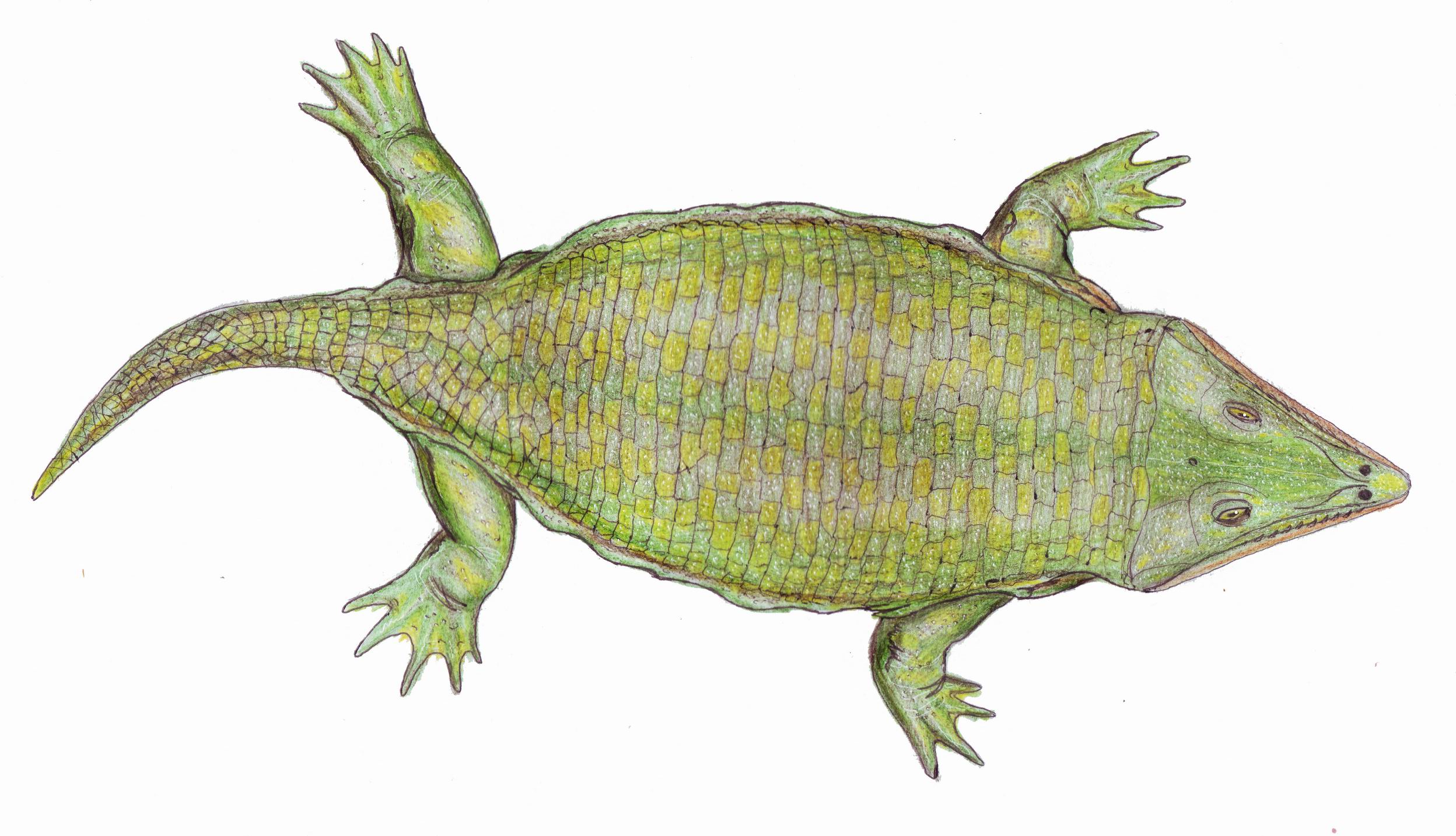|
Tupilakosaurus
''Tupilakosaurus'' is an extinct genus of dvinosaurian temnospondyl within the family Tupilakosauridae. Two species are known: *''Tupilakosaurus heilmani'' Nielsen, 1954 — Wordie Creek Formation, Greenland *''Tupilakosaurus wetlugensis'' Shishkin, 1961 — Vokhma and Kopanskaya Formation, Nizhny Novgorod Oblast Nizhny Novgorod Oblast () is a federal subjects of Russia, federal subject of Russia (an oblast). Its administrative center is the types of inhabited localities in Russia, city of Nizhny Novgorod. It has a population of 3,119,115 as of the 2021 Ru ..., Russia See also * Prehistoric amphibian * List of prehistoric amphibians References Dvinosauria Induan genera Triassic temnospondyls of Europe Fossils of Greenland Triassic Greenland Fossil taxa described in 1954 {{temnospondyli-stub ... [...More Info...] [...Related Items...] OR: [Wikipedia] [Google] [Baidu] |
Wordie Creek Formation
The Wordie Creek Formation is an uppermost Permian and Lower Triassic geologic formation in Greenland, outcrops of which are located in Northeast Greenland National Park (until 2008 Tunu County, Danish: Østgrønland, English: East Greenland). In 2017, it was suggested to be raised to group status, as the Wordie Creek Group. The Lower Triassic sediments in the region were discovered in 1926 independently by James Wordie and Lauge Koch, and the latter named the formation. The rock layers preserve fossils of invertebrates (e.g., ammonoids, gastropods), fishes (coelacanths, ray-finned fish, cartilaginous fish) and temnospondyl amphibians,. dating back to the Induan age (geology), age. Geology Following Surlyk et al., the Wordie Creek Group is subdivided into two formations, the Kap Stosch Formation and the overlying Godthåb Golf Formation. The Kap Stosch Formation was deposited in relatively deep, partly isolated turbiditic basin, and the Godthåb Golf Formation under relati ... [...More Info...] [...Related Items...] OR: [Wikipedia] [Google] [Baidu] |
Tupilakosauridae
Tupilakosauridae is an extinct family of dvinosaurian temnospondyls. It contains the genera ''Slaugenhopia'', '' Thabanchuia'', '' Tupilakosaurus'', and possibly ''Kourerpeton''. Tupilakosaurs are known from Texas, Greenland, Russia, and France. The earliest tupilakosaur, ''Slaugenhopia'', is Early Permian in age while the latest known tupilakosaurs are Early Triassic in age. Derived tupilakosaurs possess embolomerous centra in their vertebrae, which are diplospondylous. They also have a deep notch in the pterygoid bone of the palate. Tupilakosaurs were aquatic, and used an undulatory mode of swimming much like that of eels. References External linksTupilakosauridaein the Paleobiology Database The Paleobiology Database (PBDB) is an online resource for information on the distribution and classification of fossil animals, plants, and microorganisms. History The Paleobiology Database originated in the NCEAS-funded Phanerozoic Marine Pale ... Dvinosauria Temnospondy ... [...More Info...] [...Related Items...] OR: [Wikipedia] [Google] [Baidu] |
Eigil Nielsen (paleontologist)
Eigil Hans Aage Nielsen (16 August 1910 – 8 December 1968) was a Danish paleontologist, who specialized in fossil vertebrate anatomy, particularly of Triassic bony fish. Life Eigil Nielsen was born in Copenhagen on 16 August 1910, to engineer Hans Peder Nielsen and his wife Ellen Nielsen (née Pedersen). He attended Sorø Akademi gymnasium. Already at young age, he collected fossils from different paleontological sites in Denmark. He later studied in Copenhagen, and received his Master's degree in 1935 and his doctorate degree in 1942. He studied especially fossil vertebrate faunas from Greenland, which were collected during multiple expeditions. In 1957, he became professor of paleontology in Copenhagen and curator at the Geological Museum in Copenhagen. He had been a member of the Royal Danish Academy of Sciences and Letters since 1965. He died in Gentofte on 8 December 1968 after a long illness. Research Nielsen is mostly known for his in-depth monographs on Triassic ray-f ... [...More Info...] [...Related Items...] OR: [Wikipedia] [Google] [Baidu] |
Triassic Greenland
The Triassic ( ; sometimes symbolized 🝈) is a geologic period and system which spans 50.5 million years from the end of the Permian Period 251.902 million years ago ( Mya), to the beginning of the Jurassic Period 201.4 Mya. The Triassic is the first and shortest period of the Mesozoic Era and the seventh period of the Phanerozoic Eon. Both the start and end of the period are marked by major extinction events. The Triassic Period is subdivided into three epochs: Early Triassic, Middle Triassic and Late Triassic. The Triassic began in the wake of the Permian–Triassic extinction event, which left the Earth's biosphere impoverished; it was well into the middle of the Triassic before life recovered its former diversity. Three categories of organisms can be distinguished in the Triassic record: survivors from the extinction event, new groups that flourished briefly, and other new groups that went on to dominate the Mesozoic Era. Reptiles, especially archosaurs, were the chief terr ... [...More Info...] [...Related Items...] OR: [Wikipedia] [Google] [Baidu] |
Prehistoric Amphibian
This list of prehistoric amphibians is an attempt to create a comprehensive listing of all genera from the fossil record that have ever been considered to be amphibians, excluding purely vernacular terms. The list includes all commonly accepted genera, but also genera that are now considered invalid, doubtful ('' nomina dubia''), or were not formally published (''nomina nuda''), as well as junior synonyms of more established names, and genera that are no longer considered amphibians. Modern forms are excluded from this list. The list currently includes 457 names. Naming conventions and terminology Naming conventions and terminology follow the International Code of Zoological Nomenclature. Technical terms used include: * Junior synonym: A name which describes the same taxon as a previously published name. If two or more genera are formally designated and the type specimens are later assigned to the same genus, the first to be published (in chronological order) is the senior synony ... [...More Info...] [...Related Items...] OR: [Wikipedia] [Google] [Baidu] |
Triassic Temnospondyls Of Europe
The Triassic ( ; sometimes symbolized 🝈) is a geologic period and system which spans 50.5 million years from the end of the Permian Period 251.902 million years ago ( Mya), to the beginning of the Jurassic Period 201.4 Mya. The Triassic is the first and shortest period of the Mesozoic Era and the seventh period of the Phanerozoic Eon. Both the start and end of the period are marked by major extinction events. The Triassic Period is subdivided into three epochs: Early Triassic, Middle Triassic and Late Triassic. The Triassic began in the wake of the Permian–Triassic extinction event, which left the Earth's biosphere impoverished; it was well into the middle of the Triassic before life recovered its former diversity. Three categories of organisms can be distinguished in the Triassic record: survivors from the extinction event, new groups that flourished briefly, and other new groups that went on to dominate the Mesozoic Era. Reptiles, especially archosaurs, were the chief terr ... [...More Info...] [...Related Items...] OR: [Wikipedia] [Google] [Baidu] |
Dvinosauria
Dvinosaurs are one of several new clades of temnospondyls named in the phylogenetic review of the group by Yates and Warren 2000. They represent a group of primitive semi-aquatic to completely aquatic temnospondyls, and are known from the Late Carboniferous to the Early Triassic, being most common in the Permian period. Their distinguishing characteristics are a reduction of the otic notch; the loss of a flange on the rear side of the pterygoid; and 28 or more presacral vertebrae. Trimerorhachidae is the most basal family of dvinosaurs. Most other dvinosaurs are placed in the superfamily Dvinosauroidea. Within Dvinosauroidea are two families, Eobrachyopidae and Tupilakosauridae, as well as dvinosaurs that cannot be placed in either family, such as '' Dvinosaurus'' and '' Kourerpeton''. A 2008 phylogenetic analysis found Eobrachyopidae to be paraphyletic, representing a grade of basal dvinosauroids. Below is a cladogram A cladogram (from Greek language, Greek ''clados'' " ... [...More Info...] [...Related Items...] OR: [Wikipedia] [Google] [Baidu] |
List Of Prehistoric Amphibians
This list of prehistoric amphibians is an attempt to create a comprehensive listing of all genera from the fossil record that have ever been considered to be amphibians, excluding purely vernacular terms. The list includes all commonly accepted genera, but also genera that are now considered invalid, doubtful ('' nomina dubia''), or were not formally published (''nomina nuda''), as well as junior synonyms of more established names, and genera that are no longer considered amphibians. Modern forms are excluded from this list. The list currently includes 457 names. Naming conventions and terminology Naming conventions and terminology follow the International Code of Zoological Nomenclature. Technical terms used include: * Junior synonym: A name which describes the same taxon as a previously published name. If two or more genera are formally designated and the type specimens are later assigned to the same genus, the first to be published (in chronological order) is the senior synony ... [...More Info...] [...Related Items...] OR: [Wikipedia] [Google] [Baidu] |
Fossils Of Greenland
A fossil (from Classical Latin , ) is any preserved remains, impression, or trace of any once-living thing from a past geological age. Examples include bones, shells, exoskeletons, stone imprints of animals or microbes, objects preserved in amber, hair, petrified wood and DNA remnants. The totality of fossils is known as the ''fossil record''. Though the fossil record is incomplete, numerous studies have demonstrated that there is enough information available to give a good understanding of the pattern of diversification of life on Earth. In addition, the record can predict and fill gaps such as the discovery of ''Tiktaalik'' in the arctic of Canada. Paleontology includes the study of fossils: their age, method of formation, and evolutionary significance. Specimens are sometimes considered to be fossils if they are over 10,000 years old. The oldest fossils are around 3.48 billion years to 4.1 billion years old. Early edition, published online before print. The ob ... [...More Info...] [...Related Items...] OR: [Wikipedia] [Google] [Baidu] |
Induan Genera
The Induan is the first age of the Early Triassic epoch in the geologic timescale, or the lowest stage of the Lower Triassic series in chronostratigraphy. It spans the time between 251.9 Ma and 249.9 Ma (million years ago). The Induan is sometimes divided into the Griesbachian and the Dienerian subages or substages. The Induan is preceded by the Changhsingian (latest Permian) and is followed by the Olenekian. The Induan is roughly coeval with the regional Feixianguanian Stage of China. Geology Stratigraphy The Triassic is the first period of the Mesozoic era. It is subdivided into the Lower, Middle, and Upper Triassic series, which are further subdivided into stages. The Induan is the first stage of the Lower Triassic, from 251.9 million to 249.9 million years ago, spanning the first 2 million years after the Permian–Triassic extinction event. Stages can be defined globally or regionally. For global stratigraphic correlation, the International Commission on Stratigraphy (I ... [...More Info...] [...Related Items...] OR: [Wikipedia] [Google] [Baidu] |
Induan
The Induan is the first age of the Early Triassic epoch in the geologic timescale, or the lowest stage of the Lower Triassic series in chronostratigraphy. It spans the time between 251.9 Ma and 249.9 Ma (million years ago). The Induan is sometimes divided into the Griesbachian and the Dienerian subages or substages. The Induan is preceded by the Changhsingian (latest Permian) and is followed by the Olenekian. The Induan is roughly coeval with the regional Feixianguanian Stage of China. Geology Stratigraphy The Triassic is the first period of the Mesozoic era. It is subdivided into the Lower, Middle, and Upper Triassic series, which are further subdivided into stages. The Induan is the first stage of the Lower Triassic, from 251.9 million to 249.9 million years ago, spanning the first 2 million years after the Permian–Triassic extinction event. Stages can be defined globally or regionally. For global stratigraphic correlation, the International Commission on Str ... [...More Info...] [...Related Items...] OR: [Wikipedia] [Google] [Baidu] |





